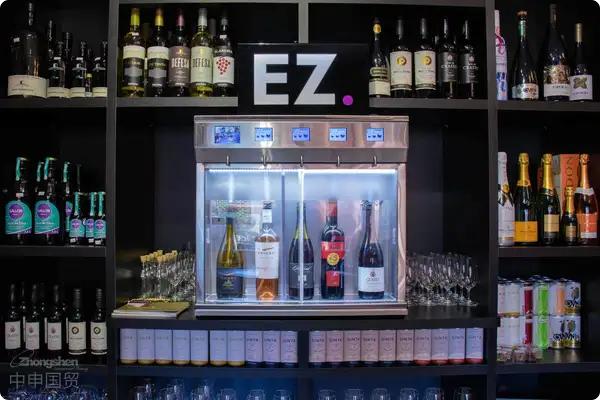- Shanghai Zhongshen International Trading Co., Ltd. – Your reliable partner with 20 years of import/export agency service expertise.

From Hop to Glass: A Quality Defense Battle Across Eight Thousand Kilometers
The copper mash tun at the Munich brewery is still steaming, while the importer in Shanghai has already begun to calculate theMaritime transporttimeliness. As a 20-year "beer porter" deeply involved in Sino-German trade, I have witnessed too many trade frictions caused by cultural differences. Last year, an importer, due to neglecting thebeer foam height standard, had an entire container of goods judged as not meeting food safety standards at the port. This case reminds us: importing beer is not just the flow of goods, but a process of cultural decoding.
Qualification Review: A More Important Entry Permit than Beer Purity
Before shaking hands with the German brewery, please confirm that these documents are complete:
- Manufacturer's HACCP certification (EU registration number format: DE ES 1234 EC)
- Origin Certificateoriginal certificate (note the tax rate difference between Hesse and Bavaria)
- Hop variety description (including alpha acid content test report)
- Halal certification (for specific channel clients)
In 2022, an importer, due to a missingmalt roasting degree test report, had their goods detained at the port for 37 days, incurring a daily storage fee of 200 euros. It is recommended to specify the document delivery time node in the contract.
Logistics Solution: The Art of Racing Against the Beer's Shelf Life
Comparison of the cost-performance of three transport methods (taking a 40-foot container as an example):
| Transportation method | Timeliness (days) | Cost (Euro) | Temperature fluctuation |
|---|---|---|---|
| Regular sea freight | 35-42 | 4,200 | ±8℃ |
| Constant Temperature Ocean Shipping | 33-38 | 6,800 | ±2°C |
| China-Europe Railway Express | 18-22 | 9,500 | ±5℃ |
It is recommended to choose a temperature-controlled container for sensitive categories such as pale ale, while stouts and other heavy-flavored beers can be considered for regular sea freight. Note thatcontainer pre-coolingoperations require notifying the shipping company 48 hours in advance.
Customs Clearance Strategy: Understanding the "Beer Language" of Chinese Customs
- Accurate classification of the tariff number:
- 22030000 (beer brewed from malt)
- 22029010 (non-alcoholic beer, alcohol ≤ 0.5%)
- Common minefields for Chinese labels:
- Not labeled "pasteurized"
- Alcohol content labeling error exceeds ±0.5%vol
- Missing the warning "Excessive drinking is harmful to health"
In 2022, a certain brand, fordirectly translating "Hefe-Weizen" as "yeast wheat", received consumer complaints and only passed the review after changing it to "cloudy wheat beer."
Localized Operation: Let German Beer Tell a Chinese Story
The golden combination in a successful case:
- Channel adaptation:
- 500ml bottles mainly for the catering channel
- 330ml cans for convenience stores
- 5L kegs for corporate customization
- Flavor improvement:
- Reduce the bitterness value (IBU) to the 25-30 range
- Develop regional special editions such as osmanthus wheat
A certain Bavarian brand, through abottle cap QR code traceability system, increased its terminal sales velocity by 40%. This case reveals: traditional industries need digital innovation even more.
FAQ quick Q&A
Q: What to do about the generally short shelf life of German beer?
A: It is recommended to adopt a "pre-sale + JIT replenishment" model. An importer, through this model, increased their inventory turnover rate from 2.1 times to 5.3 times.
Q: How to respond to sudden policy adjustments?
A: Establish a policy early warning mechanism. For example, for thenew regulations on imported food traceability codes to be implemented in 2025, we have already assisted clients in upgrading their packaging coding systems in advance.
Standing on the container terminal at the port of Hamburg, watching the beer containers marked "Fragile" being slowly lifted, I have always believed: a good trade service provider should be like the carbon dioxide in beer—usually invisible, but can make the entire transaction process full of vitality.
Related recommendations
- How to Avoid the Five Major Risks in Customs Clearance for an Entire Container of Red Wine?
- Is it easy to be an export red-wine agent? A 20-year veteran foreign-trade insider gives an in-depth analysis
- How to Choose a Compliant Export Wine Agent? 2025 Latest Policy Interpretation
- Shanghai Red Wine’s Export Code: Foreign-Trade Wisdom Aged in Oak Barrels
- How to Quickly Launch a Wine Export Agency Business? These 9 Key Questions Must Be Mastered!
? 2025. All Rights Reserved.










